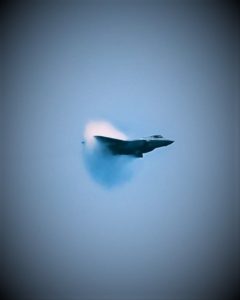

In some instances weather conditions can distort sonic booms.ĭepending on the aircraft's altitude, sonic booms reach the ground two to 60 seconds after flyover. Other maneuvers, such as deceleration and climbing, can reduce the strength of the shock. Some maneuvers, diving, acceleration or turning, can cause focusing of the boom. For steady supersonic flight, the boom is described as a carpet boom since it moves with the aircraft as it maintains supersonic speed and altitude. Ground width of the boom exposure area is approximately one mile for each 1,000 feet of altitude that is, an aircraft flying supersonic at 30,000 feet will create a lateral boom spread of about 30 miles. Boom intensity is greatest directly under the flight path, progressively weakening with greater horizontal distance away from the aircraft flight track. Overpressures in the sonic boom impact area, however, will not be uniform. Greater altitude also increases the boom's lateral spread, exposing a wider area to the boom. In general, the greater an aircraft's altitude, the lower the overpressure on the ground. The intensity and width of a sonic boom path depends on the physical characteristics of the aircraft and how it is operated. Duration of sonic boom is brief less than a second - 100 milliseconds (.100 seconds) for most fighter-sized aircraft and 500 milliseconds for the space shuttle or Concorde jetliner. The energy range of sonic boom is concentrated in the 0.1 - 100 hertz frequency range that is considerably below that of subsonic aircraft, gunfire and most industrial noise. Ground motion resulting from sonic boom is rare and is well below structural damage thresholds accepted by the U.S.

And, typically, community exposure to sonic boom is below two pounds per square foot. Buildings in good repair should suffer no damage by pressures of less than 16 pounds per square foot. There is a probability that some damage - shattered glass, for example, will result from a sonic boom. In recent tests, the maximum boom measured during more realistic flight conditions was 21 pounds per square foot. The boom was produced by a F-4 flying just above the speed of sound at an altitude of 100 feet. The strongest sonic boom ever recorded was 144 pounds per square foot and it did not cause injury to the researchers who were exposed to it. Peak overpressures for U-waves are amplified two to five times the N-wave, but this amplified overpressure impacts only a very small area when compared to the area exposed to the rest of the sonic boom. The U-wave, or focused boom, is generated from maneuvering flights, and its pressure wave is shaped like the letter "U." U-waves have positive shocks at the front and rear of the boom in which the peak overpressures are increased compared to the N-wave.įor today's supersonic aircraft in normal operating conditions, the peak overpressure varies from less than one pound to about 10 pounds per square foot for a N-wave boom. The N-wave is generated from steady flight conditions, and its pressure wave is shaped like the letter "N." N-waves have a front shock to a positive peak overpressure which is followed by a linear decrease in the pressure until the rear shock returns to ambient pressure. There are two types of booms: N-waves and U-waves. It is the magnitude of this peak overpressure that describes a sonic boom. The sound heard on the ground as a "sonic boom" is the sudden onset and release of pressure after the buildup by the shock wave or "peak overpressure." The change in pressure caused by sonic boom is only a few pounds per square foot - about the same pressure change we experience on an elevator as it descends two or three floors - in a much shorter time period. If the plane makes a sharp turn or pulls up, the boom will hit the ground in front of the aircraft. From the perspective of the aircraft, the boom appears to be swept backwards as it travels away from the aircraft. When the aircraft exceeds the speed of sound, these pressure waves combine and form shock waves which travel forward from the generation or "release" point.Īs an aircraft flies at supersonic speeds it is continually generating shock waves, dropping sonic boom along its flight path, similar to someone dropping objects from a moving vehicle. An aircraft traveling through the atmosphere continuously produces air-pressure waves similar to the water waves caused by a ship's bow.

It is caused by an object moving faster than sound - about 750 miles per hour at sea level. Sonic boom is an impulsive noise similar to thunder.


 0 kommentar(er)
0 kommentar(er)
